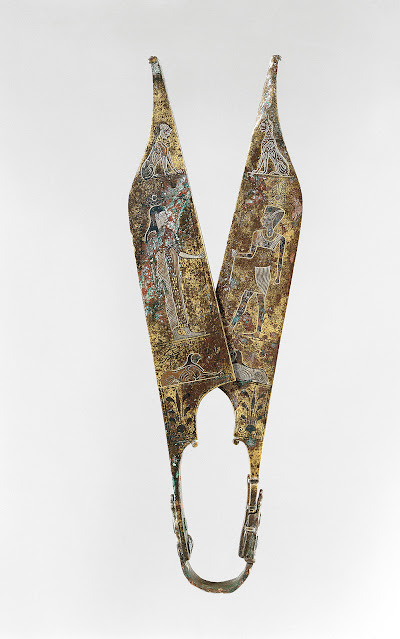Roman scissors and the scissores gladiator
The earliest known scissors appeared in Mesopotamia 3,000 to 4,000 years ago. These were of the 'spring scissor' type comprising two bronze blades connected at the handles by a thin, flexible strip of curved bronze which served to hold the blades in alignment, to allow them to be squeezed together, and to pull them apart when released.
Spring scissors continued to be used in Europe until the 16th century. However, pivoted scissors of bronze or iron, in which the blades were pivoted at a point between the tips and the handles, the direct ancestor of modern scissors, were invented by the Romans around 100 CE. They entered common use in not only ancient Rome, but also China, Japan, and Korea.
A specialized weapon known as a scissor was also used by a class of gladiators called scissores. It consisted of a long, thin cylindrical-shaped pipe terminating in a crescent-shaped blade. A handle inside the tube allowed the gladiator to maintain control. The shape of the blade could produce a serious wound from even the slightest contact.
"The scissores class of gladiators often fought with the retiarius class whose specialty was the net-like weapon they used. So the scissors were used to cut this net and slaughter the opponent. The tube-like structure that is attached to the arm was also used as a shield to block attacks. The shape and nature of the weapon made it versatile, lethal, and capable of blocking an opponent’s blows from stabbing and slashing."
https://www.ancienthistorylists.com/ancient-civilizations/top-10-popular-ancient-weapons/
 |
| Roman Scissore 54mm miniature by Pegaso Models beautifully painted by Alfonsito. |
 |
| A gladiator's scissor courtesy of ancienthistorylists.com. |




Comments
Post a Comment